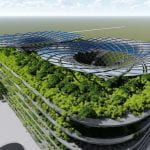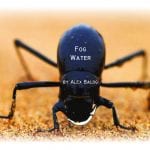I. Review
Q. How can we generate points (0,0), (10,0), (20,0), (30,0), (40,0), (50,0)?
A.Use a Series that starts with zero, steps 10 and has a count of 6
Q. How can we generate petals of a flower that are interactive (number and
angle?)
A. Use the Rotate command and feed in a list of angle numbers: i.e. Start = 0, Step = 90 and Count = 4
Q. How can we identify a specific petal to adjust?
A. List Item will isolate the Nth of a group.
II. Remap numbers
III. HELIOTROPE http://www.food4rhino.com/project/heliotropegh?ufh
A) Set the time with Rhino: Sun command
Outputs sun vector, numbers for altitude and azimuth
Remap number to move solar module.
B) Solar Arc: Set the Julian Day manually, Adjust sunrise to sunset % to override hour.
C) My Shadow
IV. LADYBUG
- http://www.grasshopper3d.com/group/ladybug
- https://www.youtube.com/user/MostaphaSad/playlists
- https://www.youtube.com/user/chrismackey88/playlists
- A) Weather Visualization
- 000_Sky Dome.gh
- 3D Graph (similar to 00 Getting Started.gh)
- 0 Wind Rose.gh: use an Analysis Period
- B) 03_Sun Path
- C) Solar Radiation (Lady_basic.gh or Lady_basic2.gh)

 1B SKIN : Parametric Patterns with Paneling Tools
1B SKIN : Parametric Patterns with Paneling Tools 




